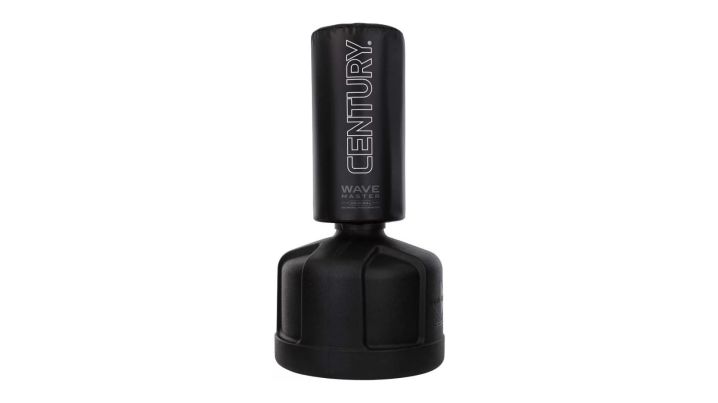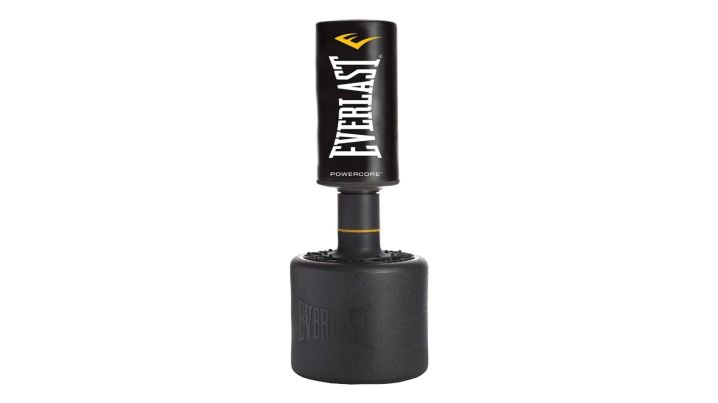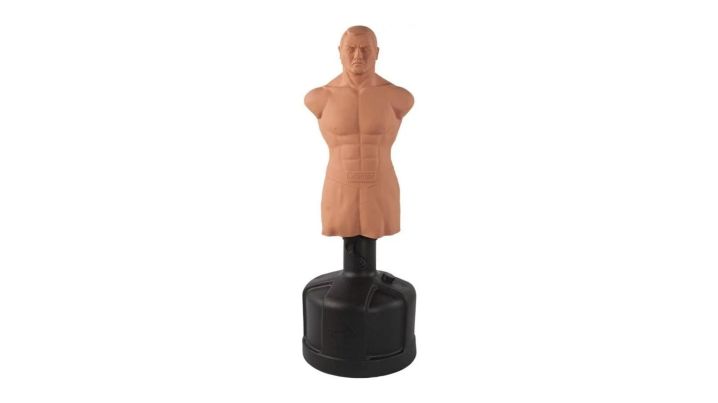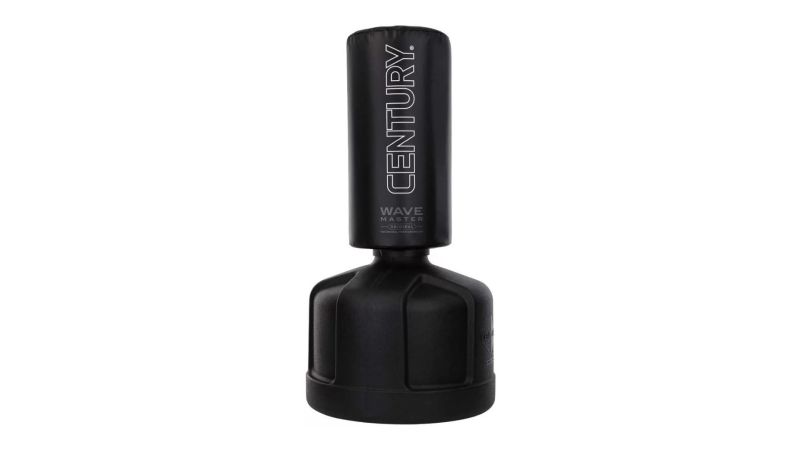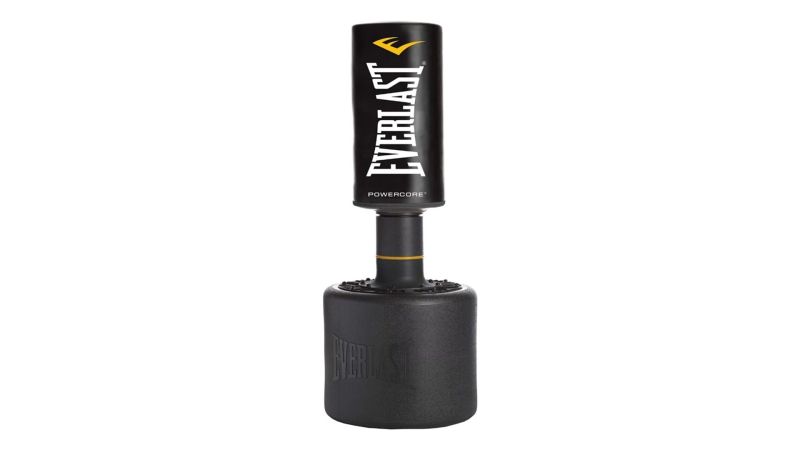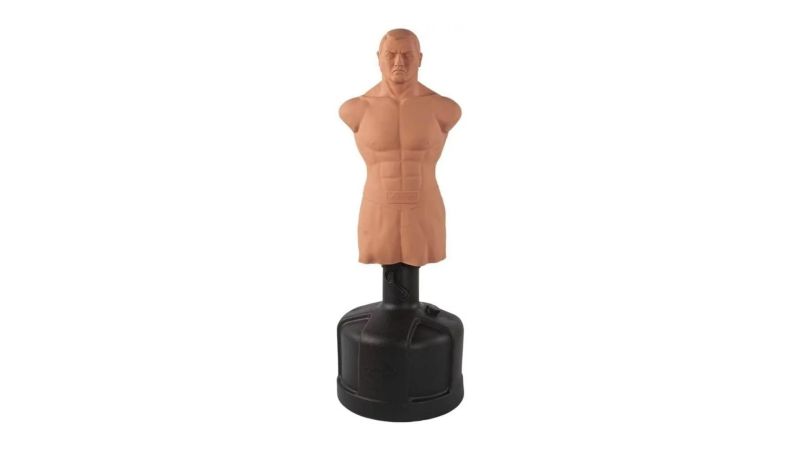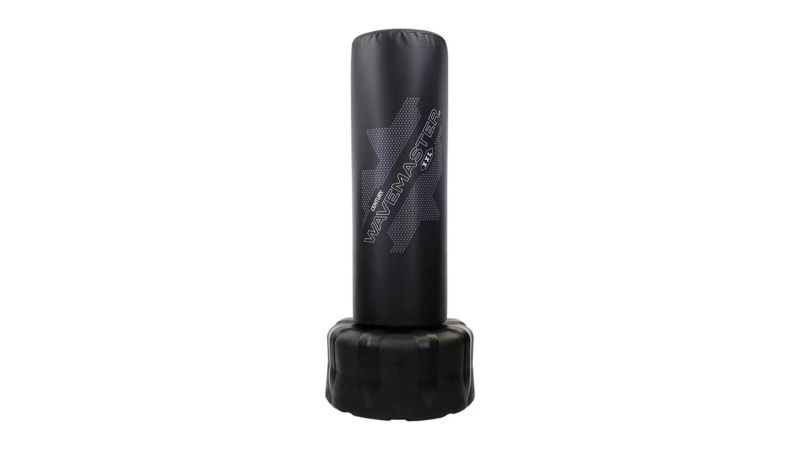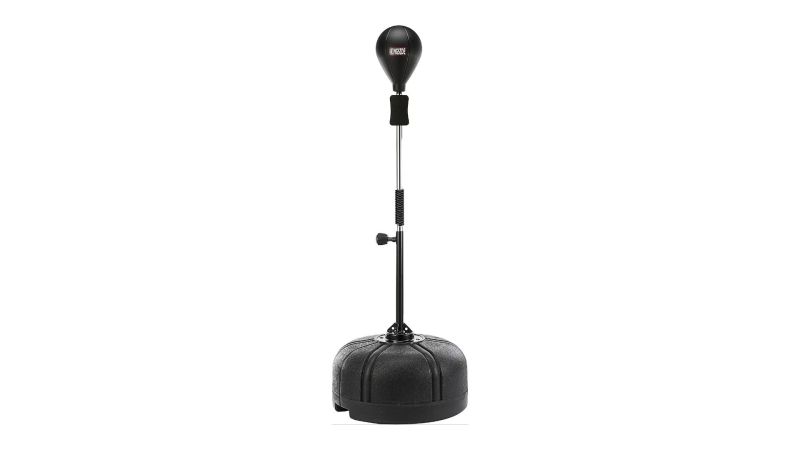We may earn revenue from the products available on this page and participate in affiliate programs.
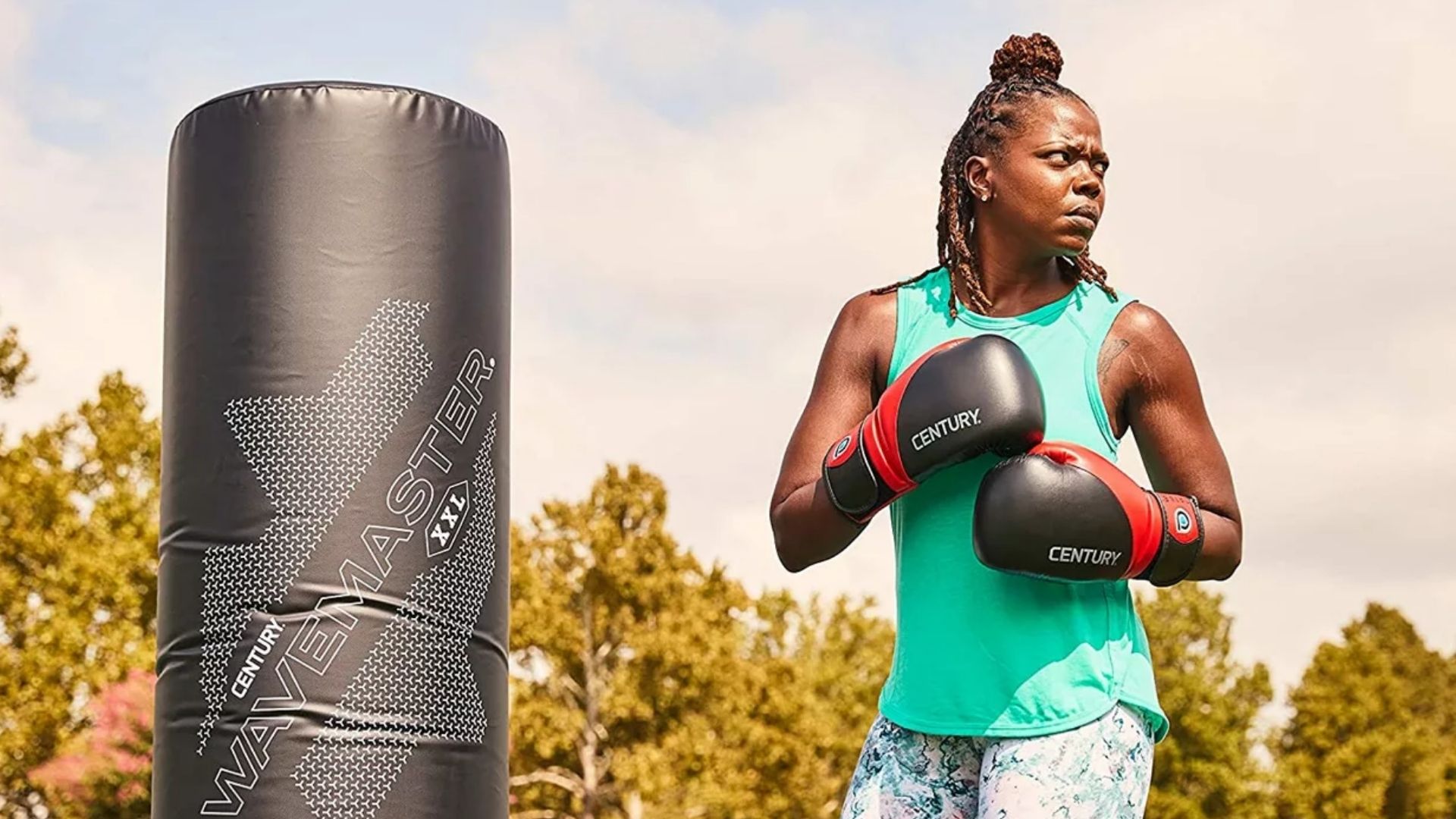
Combat sports are on the rise across America, and so is the need for free-standing punching bags. Boxing, MMA, and traditional martial arts have captured imaginations far and wide, and the need to train is immense. Regrettably, gym and dojo memberships can be a bit rich for the blood, and for those who can afford it, training venues may get too crowded or may never stay open long enough for them to get in a productive training session. Either way, the ability to train at home can make all the difference.
Hanging and wall-mounted punching bags populate more than a few basements and garages, but for those who rent their space, move often, or simply need the ability to store their training gear out of the way, a free-standing punching bag can be a lifesaver. Gone are the days of skill stagnation due to eye-watering gym fees and unenthusiastic landlords; with a free-standing punching bag, at-home training sessions are now within your reach.
- Best Overall: Century Wavemaster
- Best Value: Everlast Powercore Freestanding Heavy Bag
- Editor’s Choice: Century BOB XL & Wavemaster Top Bundle
- Best Tall: Century Wavemaster XXL
- Best Reflex Bag: Ringside Cobra Reflex Boxing Punching Bag (New Version)
Best Overall
Century Wavemaster
Best Value
Everlast Powercore Freestanding Heavy Bag
Editor’s Choice
Century BOB XL u0026 Wavemaster Top Bundle
Best Tall
Century Wavemaster XXL
Best Reflex Bag
Ringside Cobra Reflex Boxing Punching Bag (New Version)
Why you should trust us
At Task & Purpose, we take fitness seriously, and we know you do, too. To get this review off to a solid start, I did a deep dive into what different athletes and fighters demand from their own punching bags. In particular, I relied on All Fight Gear, FightCamp, Fight Quality, MMA Revolution, these two articles by PunchingBagGuide, these two articles by PunchPrime.com, and these two articles by SmartMMA to get me started.
In addition to doing plenty of in-depth research on what makes for a good free-standing punching bag, I also relied on my own experiences as well. For some, a punching bag needs to withstand the beating that comes from boxing practice day in and day out, but for others, like myself, I expect a punching bag to handle punches, kicks, elbow strikes, and knee strikes. I combined everything I learned with everything I’ve experienced in the world of unarmed self-defense to deliver the best selection possible.
Types of free-standing punching bags
Generally speaking, punching bags fall into a handful of categories, such as heavy bags, speed bags, wall bags, undercut bags, and free-standing bags. Heavy and free-standing bags are among the most common types, but free-standing punching bags can be further divided into three distinct subcategories: free-standing heavy bag, body opponent bag (“BOB” for short), and reflex bag. Let’s break each of them down.
Free-standing heavy bag
Free-standing heavy bags are by far the most common subtype of free-standing punching bags. These bags transform the traditional ceiling-mounted heavy punching bag into a mobile, punch-eating training tool. Thanks to their versatility and relative mobility, these heavy bags are an excellent option for individuals who train at home or in spaces rented from restrictive landlords.
Free-standing heavy punching bags provide excellent versatility. Like all free-standing bags, these heavy bags can adapt to a variety of fighting styles, absorbing quick jabs and roundhouse kicks with almost equal ease. This, combined with the heavy bag design and a customizable base weight, make free-standing heavy bags a solid choice for all-around training, from boxing to MMA.
Body opponent bag (BOB)
Want to take your training to the next level with a little extra realism? Enter the body opponent bag (BOB) series of free-standing punching bags. The BOB series of punching bags is made and sold exclusively by Century and is built to provide you with a more lifelike training “partner” in the form of a heavy bag.
While it makes a solid choice for all athletes and fighters, the BOB is ideal for individuals training for combat, whether real or competitive. The bag’s vinyl cover is designed to mimic human skin to provide more realistic feedback with each strike. The bag’s shape and adjustable height allows you to develop better muscle memory for delivering precise strikes to specific target areas.
Reflex bag
Reflex bags are the welterweights of free-standing punching bags. Like their heavyweight brethren, these bags sit atop a heavily weight base, but what makes reflex bags unique is the spring, pole, and air-filled bag taking the place of a structured, padded bag.
As the name suggests, a reflex bag exists to help you improve your reflexes without having to worry about installing a permanent speed bag in your not-so-permanent apartment. While most free-standing punching bags exist to absorb the impact of full-power strikes, the reflex bag was designed to help you develop better timing, speed, and mobility. As such, these bags are designed for LOW POWER PUNCHES ONLY. Save the knockout punches for your heavy bag.
Key features of free-standing punching bags
Free-standing punching bags are pretty straightforward affairs. With a bag mounted on top of a base, there are few “wow”-inducing features that deserve you attention. Instead, focus on selecting a bag that executes the basic well. Features like easy adjustability, long-term durability, and a user-friendly base deserve the vast majority of your attention.
Adjustability
With the exceptions of reflex bags, one of the greatest advantages to free-standing punching bags is their versatility. A free-standing heavy bag can serve boxers, kickboxers, MMA fighters, and other combat athletes incredibly well as can Body Opponent Bags, and much of this versatility is due to the adjustability that the basic design provides.
When shopping, select a free-standing punching bag that allows for easy bag height adjustments. Unless boxing is your sole focus, having a height-adjustable bag can do wonders for your training routine, especially if you like to alternate punches and elbow strike training with a kickfest on leg day.
Also, look for a free-standing punching bag that makes adding and removing ballast to and from the base a simple, straightforward process. Should you need to adjust your training to deliver more power, adding weight should be an easy process. If instead you need to lighten the base, then make sure ballast removal isn’t a complicated process.
Durability
Free-standing punching bags take a beating. Literally. As such, durability should be a top priority on your “must have” list. Of course, durability is heavily dependent on build quality, so look for a bag with high-quality materials and a build quality that matches. Don’t waste your cash on anything that looks or feels cheap.
When selecting any free-standing punching bag, look for a base made from high-quality plastics or similar materials. A flimsy base will give way with time, cracking and spilling water or sand all over your floor and leaving you without a serviceable punching bag.
For a free-standing heavy bag or a Body Opponent Bag, make sure the bag’s surface material, usually nylon, can take the abuse you plan to dish out, and then some. With a reflex bag, make sure the spring mounted to the base has plenty of strength and plasticity, or you will find that the bag will take on an ever-increasing cant.
User-friendly base
Not all free-standing punching bags are created equal, and nowhere is that more obvious than with a bag’s base. Small, inexpensive free standing bags often skimp in this department for the obvious advantage of saving on material costs in the manufacturing process. High-quality bags, however, use durable, highly capable bases that are also user-friendly.
The most user-friendly punching bag bases are stable, thanks in large part to tough construction materials, high weight capacities, and a pour-friendly filling port. Whether you choose to fill your free-standing bag’s base with wand, sand, pea gravel, or something else, the best bags will be easy to fill and will resist sliding under all but the highest power strikes.
Benefits of free-standing punching bags
Compared to traditional punching bags, free-standing punching bags are newcomers, but just like new car models, they possess a number of unique advantages that ceiling- or wall-mounted punching bags can never boast. If you want something mobile and space efficient, snag a free-standing bag. Want something that provides lots of bang for your workout buck? Buy a base-mounted bag.
Mobility
One of the biggest advantages to purchasing a free-standing punching bag over a ceiling- or wall-mounted option is mobility. By purchasing a bag that eliminates the need for holes in your drywall, you will find yourself with a training aid that can move almost anywhere whenever you need it to do so.
The mobility factor allows you to position your free-standing punching bag just about anywhere you can imagine. If your training space consists of a tiny basement that doubles as a jerry-rigged home theater, a free-standing bag is an excellent option as you can easily store it in the back corner for a Friday night showing of Battle: Los Angeles. Whether you need to transport your punching bag across the house or across town, a free-standing punching bag is your best option. This feature also allows for full 360-degree access which allows you to work on your own mobility as well, something missing from traditional bags hung too close to a wall.
Workout versatility
Another outstanding advantage of free-standing punching bags is the sheer versatility that they provide (with the exception of specialty reflex bags). A versatile workout tool makes for a highly cost-efficient investment. This versatility is due in large part to the design’s mobility, adjustability, and unanchored base design.
Thanks to their mobility, free-standing bags have the distinct advantage of letting you position it anywhere. This allows for 360-degree access to the bag itself, providing you with a more dynamic training environment. Throw in an adjustable bag height and the ability to increase or decrease ballast in the base, and now, you have a punching bag that can adapt to your specific training needs.
Best of all, free-standing punching bags adapt well to a wide variety of combat sports and fighting styles. While ceiling- and wall-mounted bags tend to be tailored somewhat toward specific skill sets, most free-standing punching bags will easily accommodate boxers, Muay Thai practitioners, and MMA fighters with little to no adjustment. Heck, you could even tackle the thing if you felt like it (so long as you didn’t choose water as your ballast material).
Pricing considerations for free-standing punching bags
Budget
Generally speaking, any heavy free-standing punching bag with a price tag below $200 is a budget affair, and anything under $100 should be avoided altogether. Most sub-$200 options with any degree of quality will cost between $150 and $200, although you might score an occasional deal on something below $150.
Reflex bags are another story. Their design requires less impact resistance than heavy bags, so the vast majority of reflex bags will come in below the $200 mark. For most budget-conscious reflex bags, you can expect to drop around $100, but anything with a sticker number below $90 likely isn’t worth the cash.
Mid-range to premium
In terms of heavy free-standing punching bags, the $200 to $400 bracket is the sweet spot, although most quality free-standing bags will run anywhere between $200 and $300. Between $300 and $400, you can expect to find tall bags, uppercut bags, Body Opponent Bags, and other speciality bags.
As far as reflex bags go, you won’t find many with price tags north of $200, but it does happen on occasion. If you plan to drop that much cash, then the chances are good that you are very serious about boxing or similar sports and can justify spending the extra dough.
Spending more than $400 for any free standing punching bag likely isn’t worth it to you. Unless you’re a professional or semi-professional athlete or fighter, then save your money and cap your budget at $400.
How we chose our top picks
Narrowing this list down wasn’t the easiest job in the world, so we put quite a bit of work into this effort. To start, we paid attention to what various users had to say about each punching bag, then weighed that with our own knowledge and experience. (We’d like to give a shout out to A Team and Alex Wong for their help.) If a product had a reputation for poor quality, we axed it immediately. Next, we evaluated each bag’s key features: adjustability (height and weight), durability, and user friendliness. Finally, we took a look at pricing and overall customer satisfaction. We understand that not everyone can afford to drop $400 or $500 on a punching bag, and an expensive bag that has its base burst after only a few hundred jabs is worse than swallowing a rewarmed veggie omelet MRE.
FAQs on free-standing punching bags
You’ve got questions, Task & Purpose has answers.
Q: How heavy should a free-standing punching bag be?
A: Free-standing punching bags will have a base weight somewhere between 200 and 400 pounds. Stronger individuals who practice high-power strikes, especially kicks, will want more ballast in their bag’s base. On the flip side, a smaller, lighter individual focusing on speed and lighter-power strikes can get away with something lighter.
Q: Why should I buy a free-standing punching bag over a hanging bag?
A: If you need a punching bag that can be easily moved from place to place and/or can accommodate a wide variety of strike types, then go with the free-standing punching bag.
Q: Should I fill my free-standing punching bag with water or sand?
A: As a general rule, use water if you expect to fill and empty your punching bag’s base on any sort of frequent basis. If you plan to keep your punching bag in a relatively permanent location or if you regularly deliver high-power strikes, then go with sand, a denser option.
Q: How do I stop my free-standing punching bag from moving?
A: Free-standing punching bags usually move for one of three reasons: a slick floor, not enough ballast, or the wrong kind of ballast (water instead of sand or pea gravel). To stop your bag from moving, create some friction between the base and floor or adjust the ballast.
